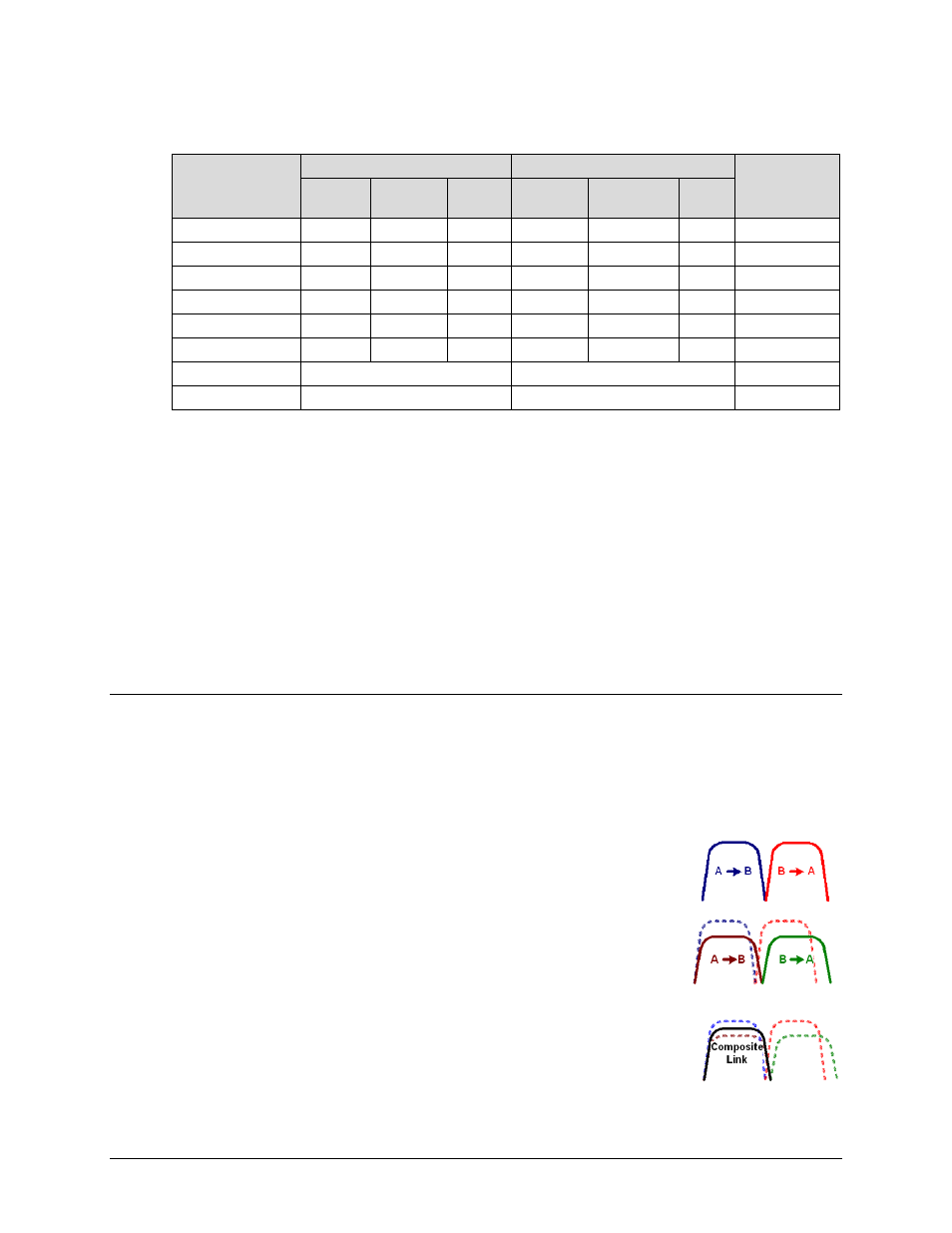J.4.6.2 power limited links – Comtech EF Data CDM-760 User Manual
Page 390

Appendix J
Revision 2
CDM-760 Advanced High-Speed Trunking Modem
MN-CDM760
J–12
The savings summary is (note TPC 7/8 is 20/23 actual):
Item
Original Link
With Carrier-in-Carrier and LDPC
Savings
Hub to
Remote
Remote To
Hub
Total
Hub to
Remote
Remote to
Hub
Total
Data Rate (kbps)
30 Mbps 10 Mbps
30 Mbps
10 Mbps
Modulation
8PSK
8PSK
8PSK
8PSK
FEC
TPC 3/4 TPC 7/8
S2 3/4
S2 3/5
Occupied BW (MHZ)
19.1
5.5
24.6
19.3
8.0
19.3
Power Eq. BW (MHz)
22.0
5.8
27.8
13.5
3.4
16.9
Leased BW (MHz)
27.8
19.3
30.5%
Hub HPA (W)
503
310
38.3%
Remote HPA (W)
219
129
41.1%
If the CnC link was designed using S2-8PSK 3/4 in both directions, it would require:
•
Occupied BW – 19.3 MHz;
•
Power Eq. BW – 17.9 MHz (a 5.9% increase in Power Eq. BW);
•
Leased BW – 19.3 MHz;
•
Hub HPA – 310 W;
•
Remote HPA – 166 W (a 28.7% increase in Remote power).
J.4.6.2 Power Limited Links
Carrier-in-Carrier can provide substantial savings even when the original link is power limited.
Spreading the carrier by using a lower modulation and/or FEC along with latest FEC such as DVB-
S2 LDPC can substantially reduce the total power which can then be traded with bandwidth
using Carrier-in-Carrier. The concept is illustrated with these examples:
The conventional link is using 8PSK, TPC 3/4:
Switching to DVB-S2 8PSK 3/4 slightly increases the total occupied
bandwidth, while substantially reducing the total power equivalent
bandwidth:
Now, using CnC, the second 8PSK 3/4 carrier can be moved over the first
carrier – thereby significantly reducing the total occupied bandwidth and
total power equivalent bandwidth when compared to the original side-
by-side 8PSK, TPC 3/4 carriers: